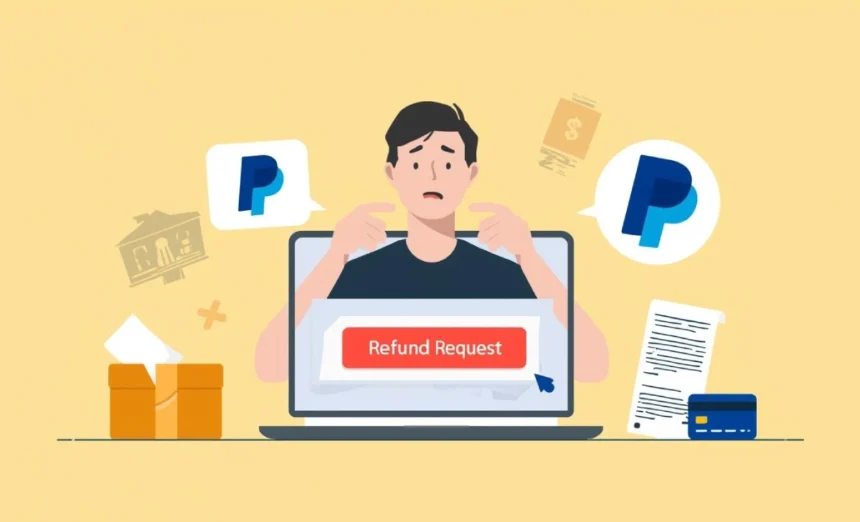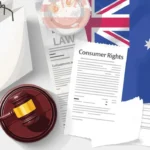Online shopping is convenient, but what happens when your purchase arrives broken, faulty, or doesn’t match the description? Whether you’ve bought from Amazon, eBay, or a local Australian retailer, you’re not stuck with defective goods.
- Understanding Your Online Refund Rights in Australia
- Step 1: Contact the Seller Directly
- Step 2: Know Refund Timelines and Seller Responses
- Step 3: Escalate Through Your Payment Provider
- Step 4: Lodge a Complaint with ACCC or State Tribunal
- FAQs
- Do I need to return the faulty product to get a refund?
- What if the online seller is based overseas?
- Can I request a repair or replacement instead of a refund?
- How long do I have to report a faulty online purchase?
- What if I used a gift card or store credit to make the purchase?
- Conclusion
Under Australian Consumer Law (ACL), you have clear rights to request a refund for a faulty online purchase in Australia — even when buying from overseas sellers. The key is knowing the correct process and acting within reasonable timeframes.
This comprehensive guide provides a step-by-step process for securing your refund, including proven email templates, payment escalation strategies, and how to lodge complaints with the ACCC when sellers refuse to cooperate.
Understanding Your Online Refund Rights in Australia
The Australian Consumer Law doesn’t distinguish between in-store and online purchases — your consumer guarantee rights apply equally to both. When you buy goods online, they must meet the same standards as any physical purchase.
Your automatic rights include:
• Acceptable quality — goods must be free from defects, safe to use, and durable
• Fit for purpose — items must be suitable for their intended use
• Match description — products must conform to any description, sample, or demonstration
• Clear title — the seller must have the right to sell the goods
These rights apply even if you’re buying from overseas sellers who ship to Australia. Distance doesn’t diminish your consumer protections.
The ACCC’s 2019 action against Kogan.com resulted in $350,000 in penalties after the online retailer made false representations about consumer guarantee rights, telling customers they had “no rights” to refunds for certain products.

Step 1: Contact the Seller Directly
The first step in securing a refund for a faulty online purchase Australia is contacting the seller promptly. Act within 7-14 days of receiving faulty goods to strengthen your position.
1. What to include in your initial contact:
• Order number and purchase date
• Clear description of the problem with photos if relevant
• Proof of purchase (receipt, email confirmation, screenshot)
• Specific remedy sought (refund, replacement, or repair)
• Reference to Australian Consumer Law rights
Document everything. Save screenshots of your order, take photos of defective items, and keep records of all communications.
2. Sample Email to Request a Refund
Subject: Refund Request – Order #[ORDER NUMBER] – Consumer Guarantee Claim
Dear [Seller Name],
I am writing to request a full refund for [product name] purchased on [date] for $[amount] (Order #[number]).
The item received is faulty because [specific problem – e.g., “arrived with a cracked screen despite careful packaging” or “does not function as described on your website”].
Under Australian Consumer Law, this product fails to meet consumer guarantees for acceptable quality and fitness for purpose. As this constitutes a major problem, I am entitled to choose my remedy and request a full refund.
Please confirm how you will process this refund within 7 days. I have attached proof of purchase and photos showing the defect.
I look forward to your prompt response.
Regards, [Your name] [Contact details]
Step 2: Know Refund Timelines and Seller Responses
Australian Consumer Law doesn’t specify exact timeframes for refunds, but businesses must act within “a reasonable time” — typically 7-30 days depending on the complexity and value of the item.
1. Major Australian online retailers’ typical refund timeframes:
| Platform | Refund Processing Time | Method |
|---|---|---|
| Amazon Australia | 3-5 business days | Original payment method |
| eBay (via seller) | 3-10 business days | PayPal or original method |
| Catch.com.au | 5-10 business days | Store credit or original method |
| Kogan.com | 5-14 business days | Original payment method |
If a seller doesn’t respond within reasonable timeframes or refuses your legitimate refund request, it’s time to escalate through other channels.
2. Red flags that indicate escalation is needed:
• Seller claims “no refunds” despite obvious defects
• Requests you pay return shipping for faulty goods
• Offers only store credit for major problems
• Ignores communications for more than 14 days

Step 3: Escalate Through Your Payment Provider
When direct negotiation fails, your payment method often provides additional protection layers that can secure your refund for faulty online purchase Australia.
1. Credit and Debit Card Chargebacks
Contact your bank to initiate a chargeback for:
• Goods not received
• Items significantly not as described
• Defective products where the seller refuses refunds
Timeline: You typically have 45-120 days from the transaction date to lodge a chargeback claim, though this varies by bank and card type.
Success tip: Provide your bank with evidence of attempts to resolve directly with the seller first.
2. PayPal Buyer Protection
PayPal offers comprehensive buyer protection for eligible purchases:
• Coverage: Up to full purchase price plus shipping
• Timeline: 180 days from the payment date to lodge a dispute
• Process: Start with “Resolution Center”, then escalate to PayPal claim if needed
The Reserve Bank of Australia’s 2023 data shows that chargebacks resolved 73% of disputed online transactions in favor of consumers, making this an effective escalation strategy.
3. Documentation needed for payment disputes:
• Original order confirmation
• Communication attempts with the seller
• Photos or evidence of defects
• Tracking information (if relevant)
Step 4: Lodge a Complaint with ACCC or State Tribunal
If payment provider escalation doesn’t work, or you’re dealing with systemic misleading conduct, formal complaints through government channels can achieve results.
1. ACCC Consumer Complaints
The Australian Competition and Consumer Commission investigates breaches of consumer law and can take enforcement action against businesses. While they don’t resolve individual disputes, they use complaint data to identify problem traders.
2. How to complain to ACCC:
• Visit consumer.gov.au or call 1300 302 502
• Provide detailed information about the business and issue
• Include evidence of communications and refusal to provide remedies
• Reference specific ACL breaches (acceptable quality, fit for purpose, etc.)
3. State and Territory Tribunals
For unresolved disputes, consumer tribunals offer affordable dispute resolution:
NCAT (NSW): Handles claims up to $40,000 for $48 fee.
VCAT (Victoria): Consumer matters up to $100,000 for $61.60 fee.
QCAT (Queensland): Claims under $25,000 for $45.75 fee.
A 2022 VCAT case saw a Melbourne consumer awarded a full $2,400 refund plus tribunal costs after an online furniture retailer delivered a damaged dining set and refused replacement requests for six months.
4. Tribunal advantages:
• No lawyers required
• Fast resolution (typically 6-8 weeks)
• Binding decisions enforceable by courts
• Minimal costs compared to potential recovery
FAQs
Do I need to return the faulty product to get a refund?
For major problems, you’re entitled to a refund even if you keep the faulty item. However, for minor repairable issues, the business may request the return of goods for inspection or repair. You shouldn’t pay return shipping costs for genuinely faulty items.
What if the online seller is based overseas?
Australian Consumer Law applies to any business selling to Australian consumers, regardless of where they’re based. However, enforcement can be more challenging with overseas sellers, making payment provider disputes often more effective.
Can I request a repair or replacement instead of a refund?
Yes, for major problems, you can choose between refund, repair, or replacement. For minor problems that can be easily fixed, the business can choose the remedy. Always consider which option provides the best outcome for your situation.
How long do I have to report a faulty online purchase?
There’s no specific time limit, but you should report problems “within a reasonable time” of discovery. For obvious defects, this means days or weeks. For hidden defects, the reasonable time starts when you discover the problem.
What if I used a gift card or store credit to make the purchase?
Your refund should be provided in the same form as your original payment. If you paid with store credit, you’re typically entitled to receive store credit as a refund, though some businesses may offer cash alternatives.
Conclusion
Getting a refund for a faulty online purchase in Australia doesn’t need to be stressful when you follow the right process. Start by understanding your consumer guarantee rights under ACL, then systematically escalate through direct seller contact, payment provider disputes, and finally government complaint channels.
The key to success is acting promptly, documenting everything, and being persistent. Your consumer rights exist specifically to protect against defective goods and uncooperative sellers — don’t hesitate to use them.
Remember to keep detailed records of all communications, take photos of defects, and reference the Australian Consumer Law in your correspondence. Most legitimate businesses will resolve issues quickly when presented with clear evidence and proper legal references.
Take action now: Save this step-by-step guide, bookmark the email templates, and remember that Australian consumer protections are among the strongest in the world. When you know your rights and follow proper procedures, getting refunds for faulty online purchases becomes straightforward rather than stressful.






